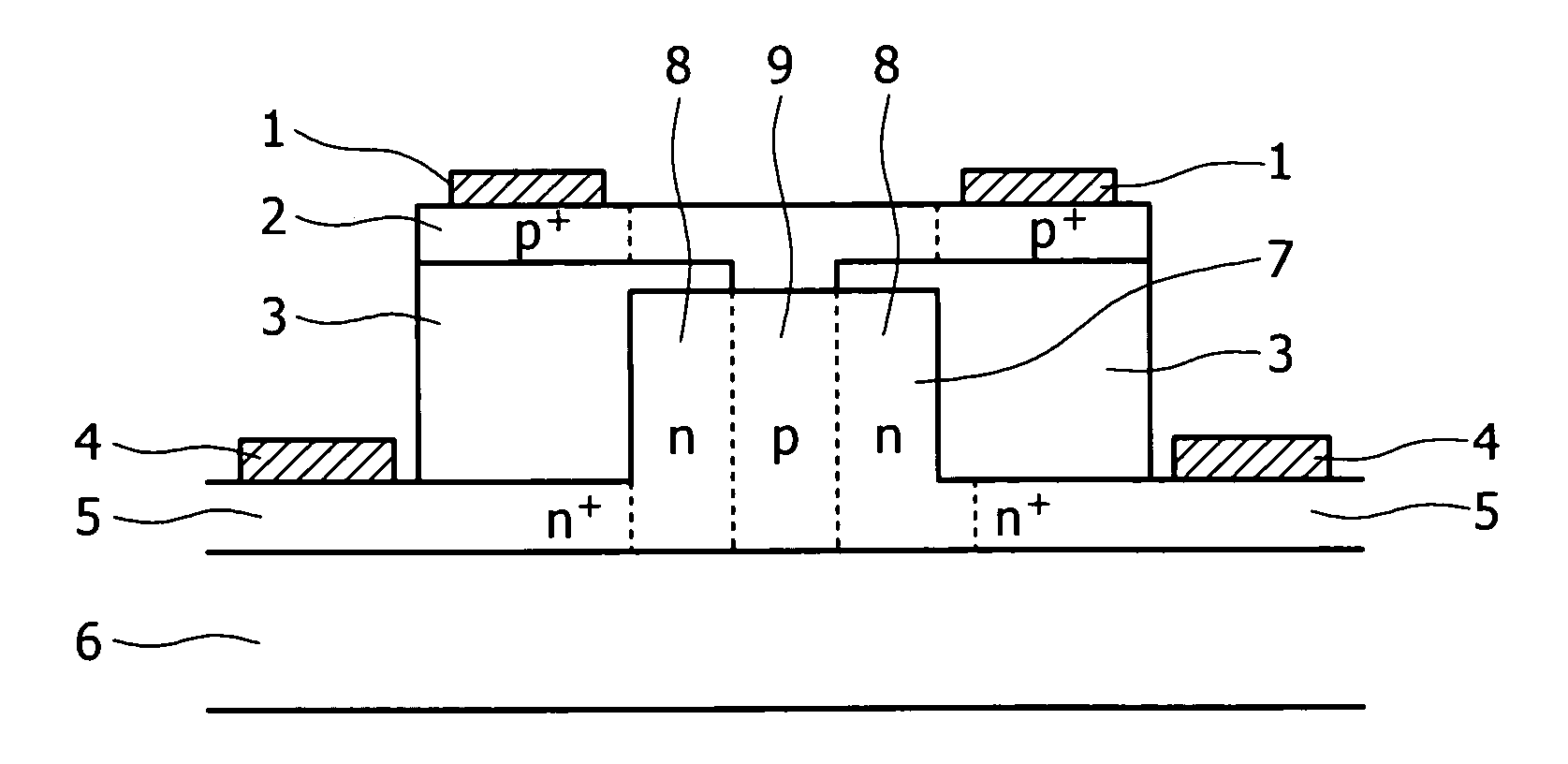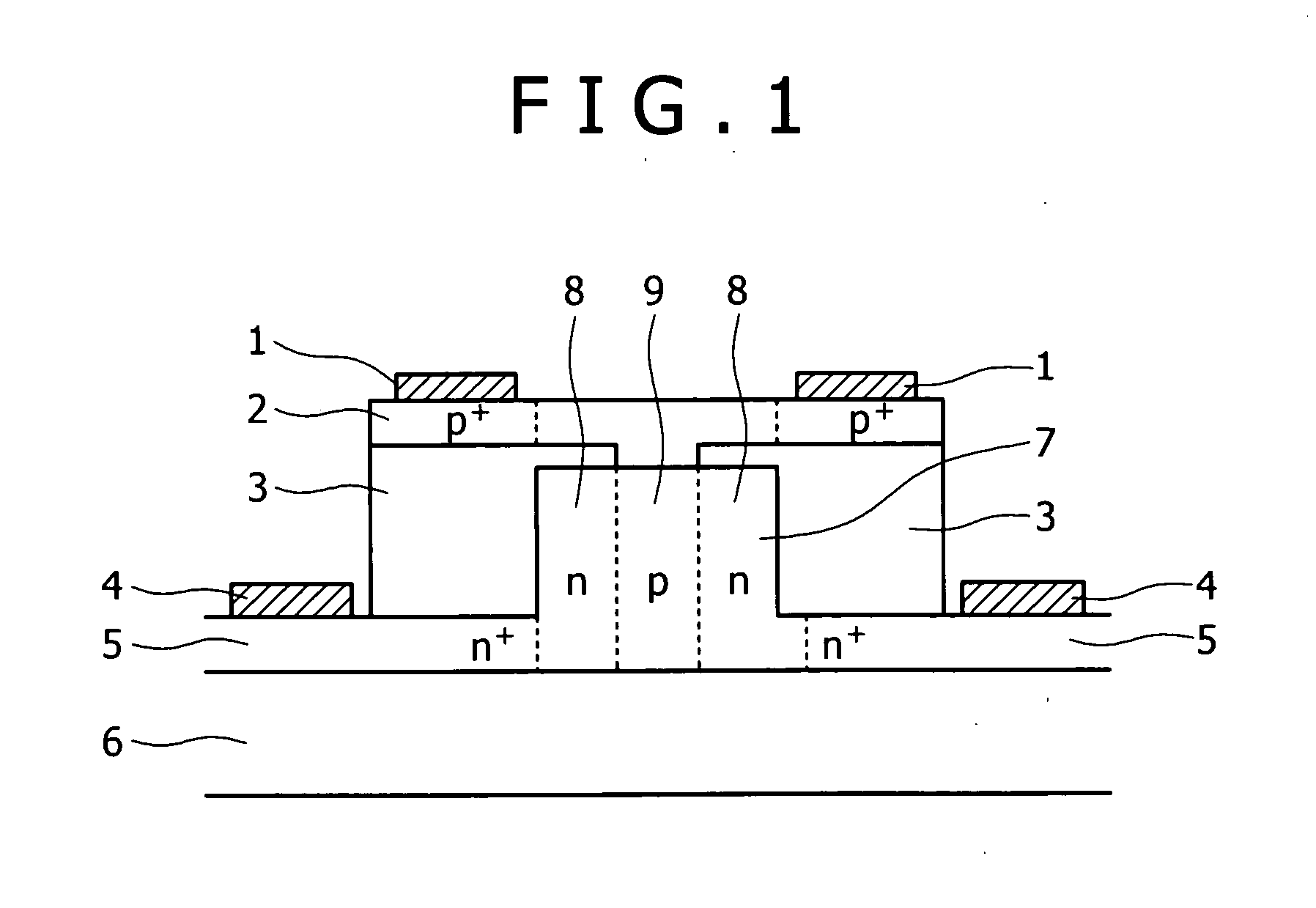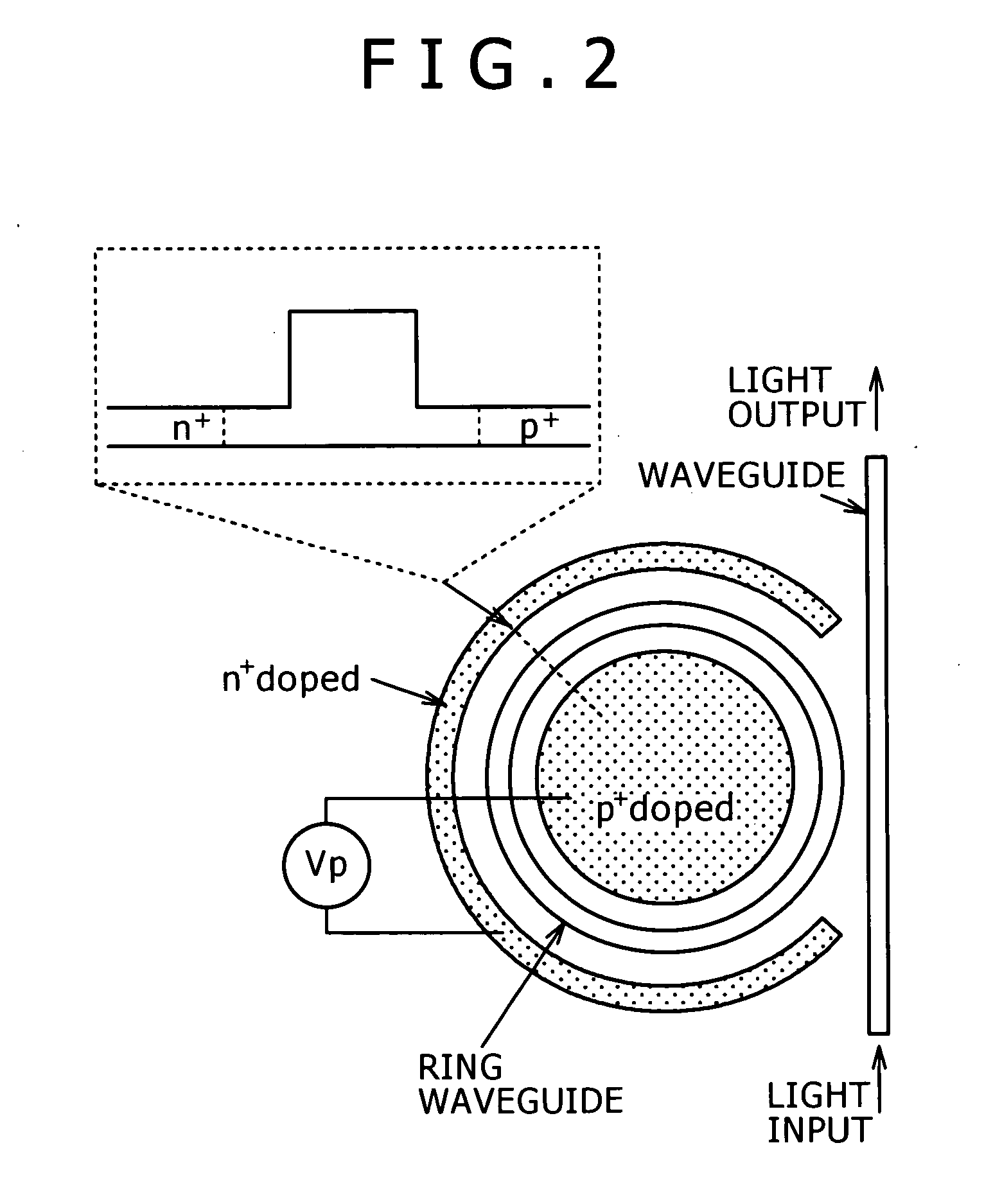Optical device
a technology of optical devices and depletion layers, applied in the field of optical devices, can solve the problems of difficult to satisfy high-speed performance and low-voltage operation, and achieve the effects of small change of depletion layer, low-voltage operation, and increased refractive index
- Summary
- Abstract
- Description
- Claims
- Application Information
AI Technical Summary
Benefits of technology
Problems solved by technology
Method used
Image
Examples
first embodiment
First Vertical Junction Type
[0038]FIG. 1 shows a cross-sectional view of a waveguide constituting an optical device according to a first embodiment of the present invention. A silicon waveguide 7 has a width of 400 nm and a thickness of 200 nm, and serves as a single mode waveguide with respect to light in a communication wavelength range. An n-p-n junction is formed in the waveguide. All of the doping concentrations of an n-type layer 8 and a p-type layer 9 of the waveguide are controlled to 5×1017. The waveguide is formed of silicon or is formed by using silicon as a main constituent. Since an n-type part and a p-type part are parts having been doped with impurities, the waveguide can be considered as an example using silicon as a main constituent. The n-type layer 8 of the waveguide is electrically connected to N electrodes through n+-type layers 5 on the left and right sides of the waveguide, respectively. The whole waveguide is covered with a SiO2 layer 3, and a p-type polysili...
second embodiment
Second Vertical Junction Type
[0041]FIGS. 9A and 9B show cross-section views of a waveguide constituting an optical device according to a second embodiment of the present invention. FIGS. 9A and 9B are an overhead view and a top view of the waveguide according to the second embodiment, respectively. As shown in FIGS. 9A and 9B, in the second embodiment, p-n junction interfaces 10 are formed in parallel with a section of the waveguide. A p-type layer 11 of the waveguide is electrically connected to a P electrode through a p+-type layer 16 on a side of the waveguide. On the other hand, the p-type layer 11 and an n+-type layer 13 are completely electrically isolated from each other by an insulating layer 14. Similarly, an n-type layer of the waveguide is electrically connected to an N electrode 12 and is insulated from the p+-type layer 16 on the side of the waveguide.
[0042]Next, an operation of the second embodiment will be described. In the second embodiment, if a reverse bias is appl...
third embodiment
[0043]FIG. 10 shows an example of an MZ interferometer using a waveguide described in the first embodiment, according to a third embodiment of the present invention. Light introduced from a light entrance 23 is divided into two light components at a bifurcation and is guided to phase modulation units 24. Each phase modulation unit 24 is formed with the refractive index modulation structure described in the first embodiment. A voltage applied between a P electrode 22 and an N electrode 23 is changed to change the optical path lengths of upper and lower arms. A phase difference between the upper and lower arms is caused in response to an applied voltage, resulting in a change in the intensity of the light from an exit 23. The MZ interferometer according to the third embodiment is applicable to, for example, a light intensity modulator.
PUM
 Login to View More
Login to View More Abstract
Description
Claims
Application Information
 Login to View More
Login to View More - R&D
- Intellectual Property
- Life Sciences
- Materials
- Tech Scout
- Unparalleled Data Quality
- Higher Quality Content
- 60% Fewer Hallucinations
Browse by: Latest US Patents, China's latest patents, Technical Efficacy Thesaurus, Application Domain, Technology Topic, Popular Technical Reports.
© 2025 PatSnap. All rights reserved.Legal|Privacy policy|Modern Slavery Act Transparency Statement|Sitemap|About US| Contact US: help@patsnap.com



